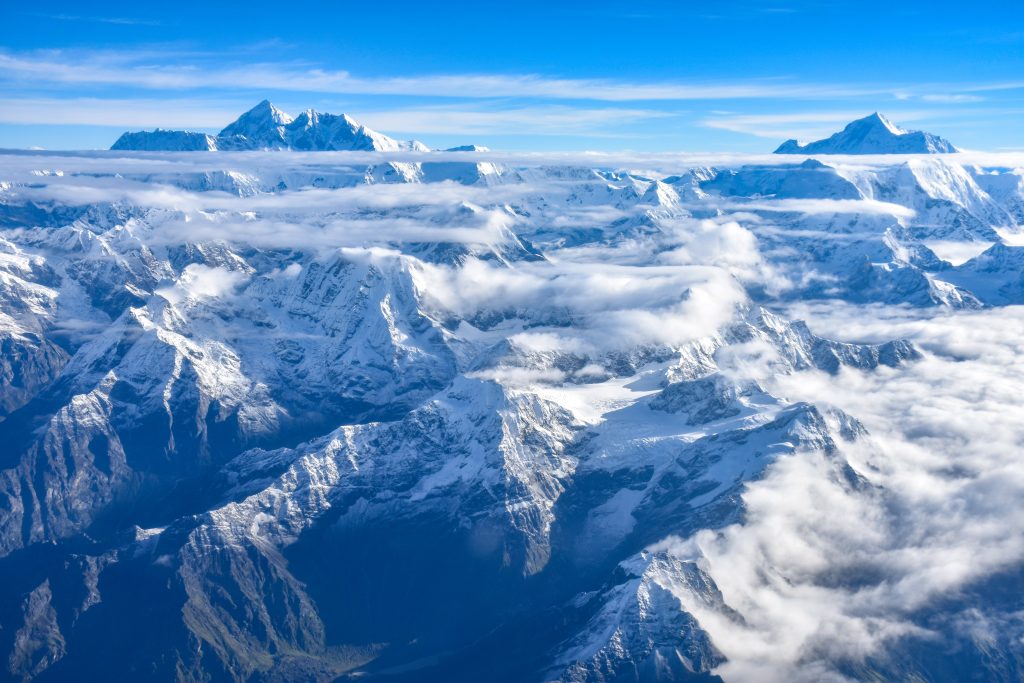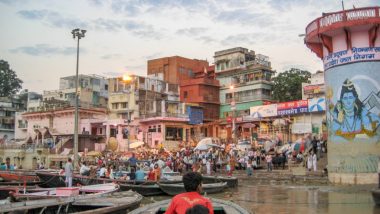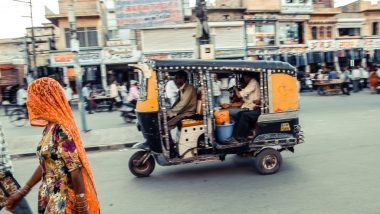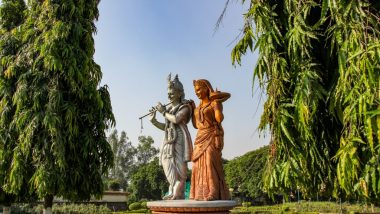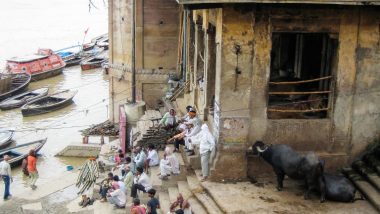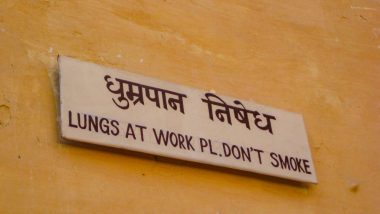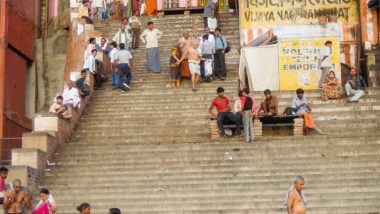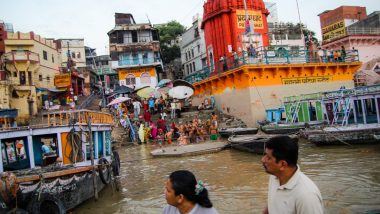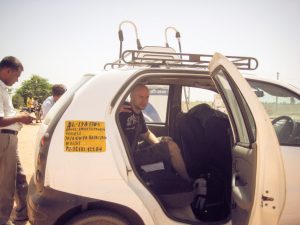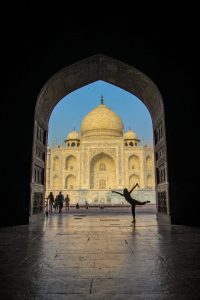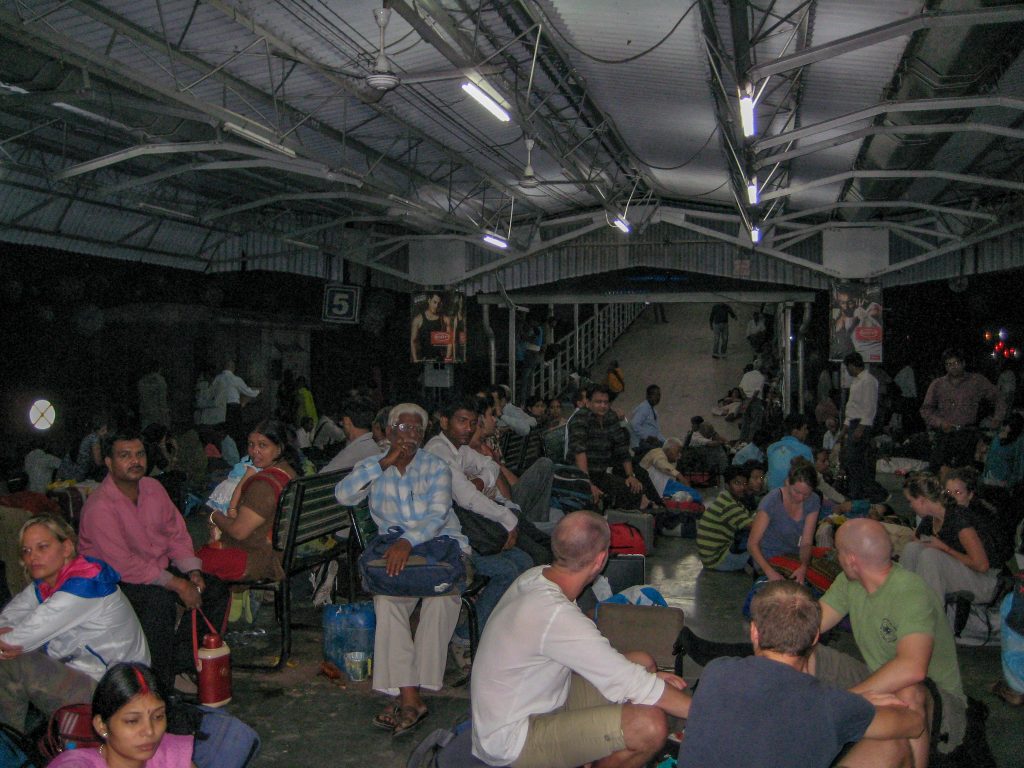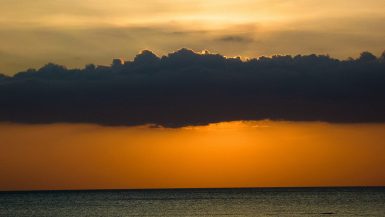Two weeks on the road
By now we had been travelling for roughly two weeks on the Indian roads.
Soon our time in the tiny, white Tata had come to an end. We were going to miss it tremendously.
Who would have thought that Indian cars had such comfort, road safety and other premium features?
We decided right there and then that we had to buy a car just like it when we returned home after our journey.
(Update: Unfortunately, they were completely sold out in all of Sweden, so we were left empty-handed. Such a shame…)
Ranthambore – Agra
From Ranthambore to Agra it is a 5,5-hour drive so we were quite tired when we arrived in the evening.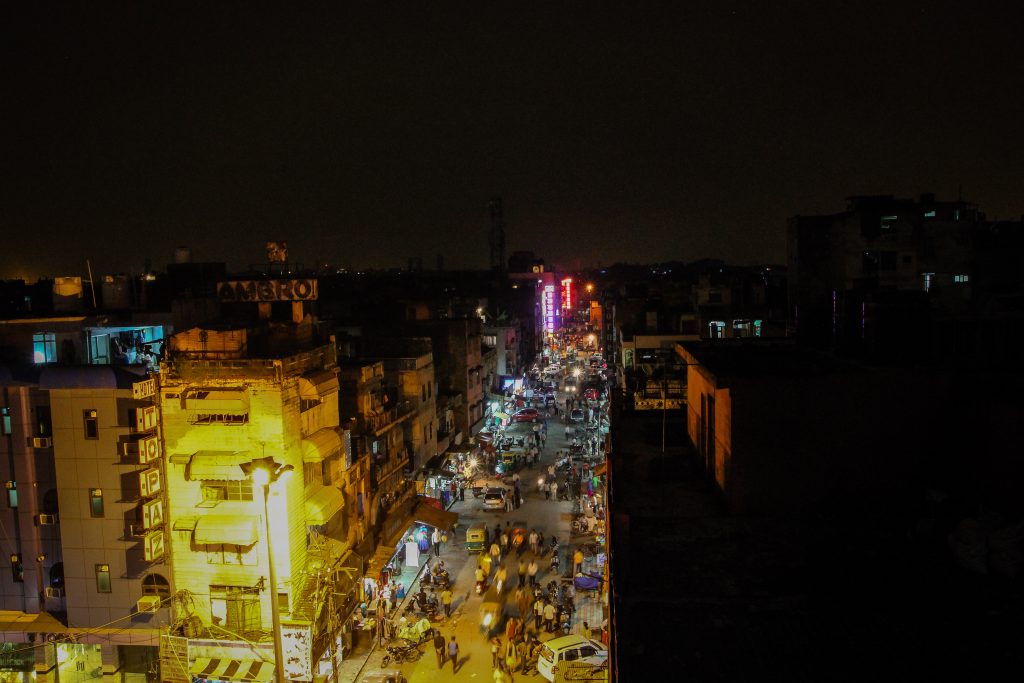
We checked in to our hotel and then took a short walk to grab some dinner at a nearby restaurant before we returned and crashed into bed.
The next day we had to wake up early, 4:30 am, to get to the Taj Mahal in time for the sunrise. And to beat the crowds.

It felt like the alarm went off as soon as we had closed our eyes.
Still half asleep (luckily we had already prepared our daypack) we walked down the stairs to the car where Kamal was waiting for us with his usual smile and a happy “Good morning!”
He drove us through town and dropped us off at the entrance of the Taj Mahal where we joined the line of people already queueing in the darkness to get in.
It was a bit surprising to see that that many tourists had gotten there so early, as it was only a quarter to six in the morning.
Early is better
If you want to experience the Taj Mahal in a magic, morning sunrise (like we did), without being surrounded by hundreds of people. Make sure you get there in time.
Even if there were many tourists in front of us when we got there, it was nothing compared to the crowd behind us half an hour later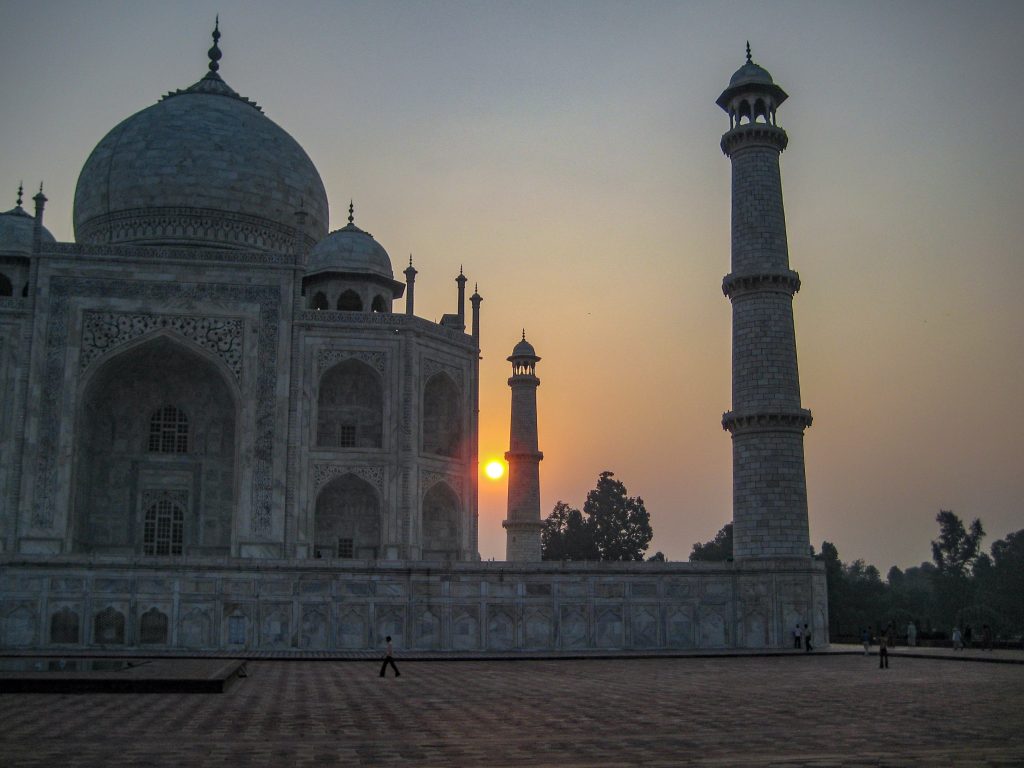
Safety first
After buying the tickets we had to pass an additional security check-point before we were let into the site.
Think of it like an airport security check.
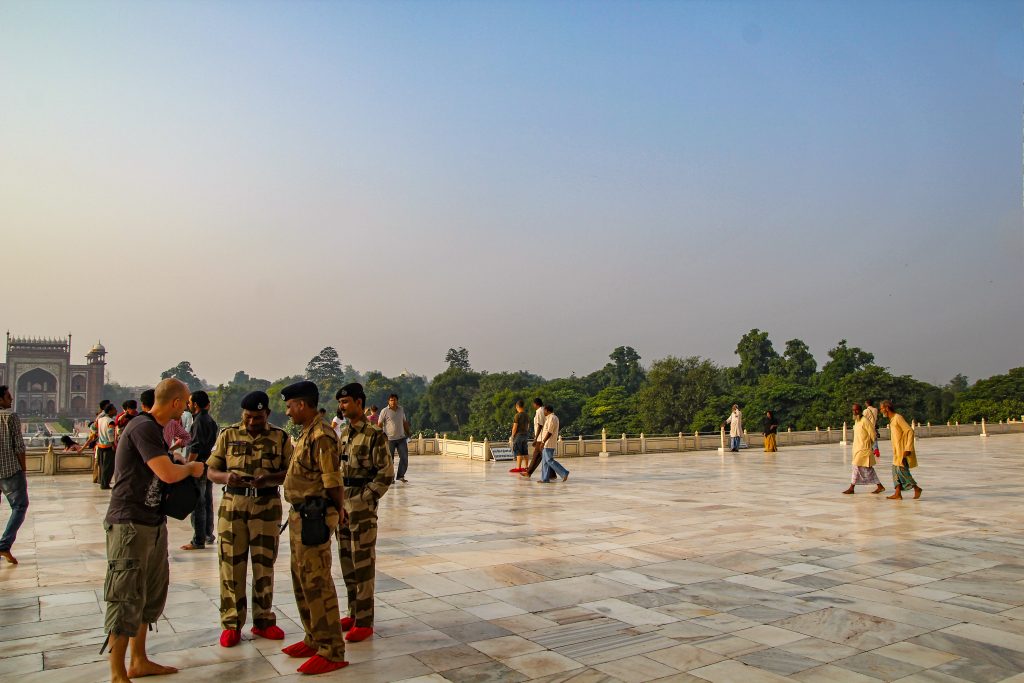 Do not bring unnecessities. And the smaller bag you bring the faster you will get through. (Except in case you intend to bring knives, firearms, alcohol and cigarettes etc. etc. Then it will take a bit longer…)
Do not bring unnecessities. And the smaller bag you bring the faster you will get through. (Except in case you intend to bring knives, firearms, alcohol and cigarettes etc. etc. Then it will take a bit longer…)
I had a normal headlamp, but camouflage-colored, in my camera bag. It took a looong time to convince the guard that it did not represent a threat to the Taj Mahal or anyone visiting it while I was there.
Electric goods are in fact prohibited but this was somewhat of a grey zone. Thankfully the security guy finally gave up his confiscation attempt. (The head lamp was damn expensive too so I am glad he did.)
Wonder of the world
The Taj Mahal, or “The Crown of Palaces”, is listed as one of the “New seven wonders of the world”. It is also a UNESCO World Heritage Site.
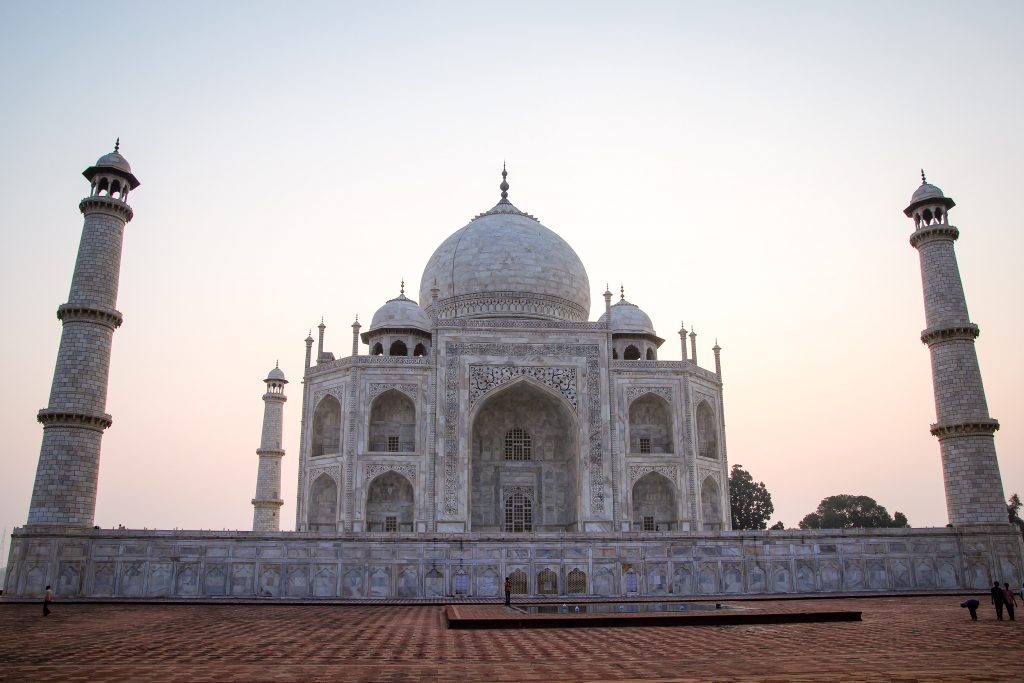 It is located in Agra, along the south bank of the Yamuna river, and was built by the Mughal Emperor Shah Jahan in memory of his late wife Mumtaz Mahal.
It is located in Agra, along the south bank of the Yamuna river, and was built by the Mughal Emperor Shah Jahan in memory of his late wife Mumtaz Mahal.
The gigantic marble mausoleum, and its surrounding gardens and buildings, took more than 20 years to build and was finished in 1653.
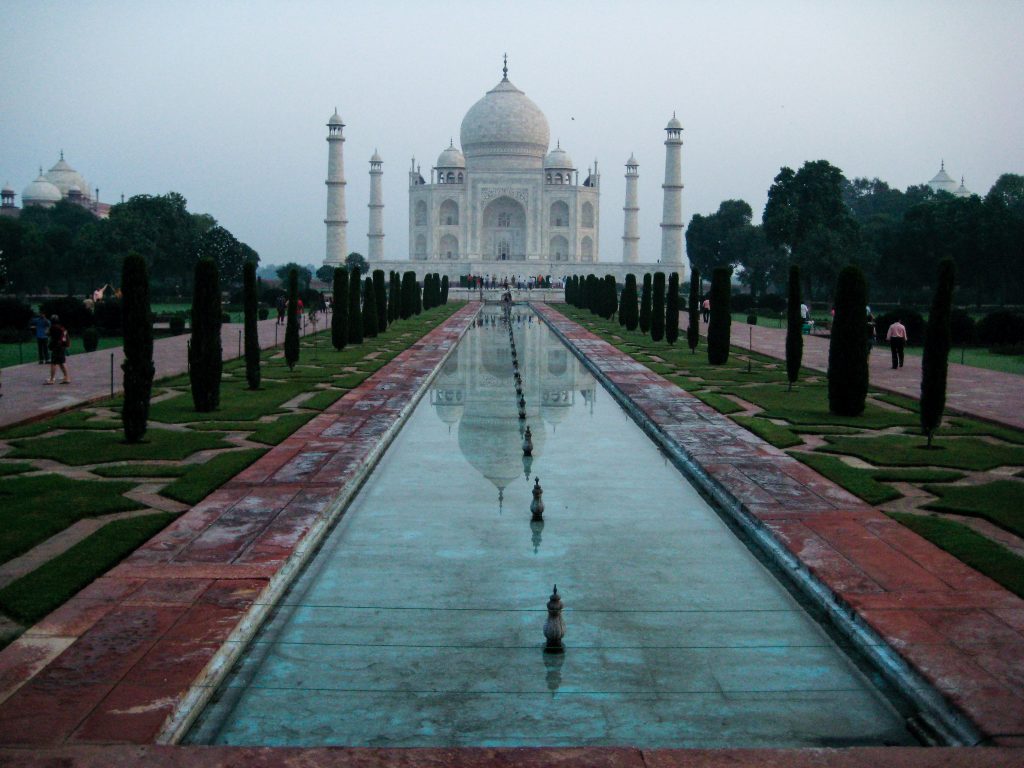 The Mughal design actually consists of a mixture of Persian, Indian and Islamic arts.
The Mughal design actually consists of a mixture of Persian, Indian and Islamic arts.
And even though historical buildings are not on top of our what-we-want-to-see-most-in-the-world-list, this visit was, on the contrary, a great experience.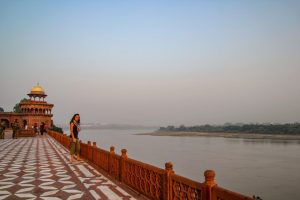
The feeling was a bit similar of being on the roof-top restaurant that we visited in Jodhpur.
When we entered the Taj Mahal premises all the noise and clamor from the outside suddenly went quiet and instead there was a pleasant serenity of the whole area.
A lot like being in a church or mosque, but outdoors.
Architectural misfits
We walked around the site for a good three hours.
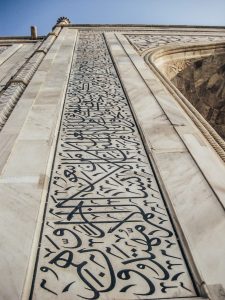 Some people hire a guide that tells you about all interesting facts and stories about the Taj. We did not.
Some people hire a guide that tells you about all interesting facts and stories about the Taj. We did not.
Instead we enjoyed ourselves watching other tourists, and how they behave and what they do. Very entertaining and it is strikingly clear that travellers from different countries behave in different ways.
Then we talked to some Indian policemen wearing not-so-uniform-matching red plastic shoecovers. I gave them a Swedish police patch but it was highly unclear if they even knew what they got or if they understood me at all.
During the rest of our visit we stayed out in the garden most of the time. The outside of the complex interested us more than the inside.
Probably we would have enjoyed it even more if we were into art symbolism, decorations and historic and religious buildings. But that is just not us.
Being in the right place
The Taj Mahal instead gave us something else.
Despite our disinterest in buildnings and tombs, right there and then, we were exactly where we wanted to be.
The morning light was spectacular as it changed the color of the dome from white to golden. Watching the sunrise and how nature transformed the whole atmosphere of the Taj was wonderful.
That is what backpacking is all about.
You go where you want, when you want and all you need in life is on your back.
You could call it a kind of personal pilgrimage, just not in a religious way.
That pobably sounds a bit goofy and strange. But it is hard to explain it in any other way.
Some places just give you a special feeling. A feeling that you will carry with you for a long time.
Special moment
We had seen photos of the Taj Mahal for such a long time, and it was very special to be there at last.
Maybe it was because all the other things we had seen in India so far was rather new, and we could not relate to them in the same way.
The Taj Mahal was different. It felt almost unreal to walk into The Great gate (the entrance) and see the colossal marble building perfectly placed in the distance as you looked out through the front gate facing the garden.
It is truly a fantastic creation and we are really happy that we decided to go and see it.
Some short facts of the Taj Mahal in case some of you intend to go:
The every day opening hours are from 06:00 am- 06:30 pm,. Except on Fridays, when the Taj Mahal is closed.
Did you know that the four pillars surrounding the Taj Mahal main dome is tilted outwards?
The idea is that if an earthquake would occur, the pillars will fall away from the tomb and not on top of it. Quite clever acutally.
The entry fee has rather hefty tourist-price boost as foreigners pay a 1100 INR entry fee while Indian nationals pay 50 INR.
Most tourists should not complain though, as the minimum wage in India is one of the lowest in the world.
Train to Varanasi
We went back to the hotel to pack our bags and get a couple of hours rest before our 12 hour over-night train ride to Varanasi.
Later that afternoon we were dropped off at the train station. We said goodbye to Kamal and were now on our own again.
The train station was crowded. Surprisingly enough we quickly found the right platform and sat down next to all the other passengers waiting for the train.
The evening was hot and humid, and we were looking forward to a cool air-conditioned compartment, with a nice and comfy bed.
Long wait
And we waited, and we waited, and we waited.
There was no information available of why the train was running late. And we were not surprised really.
That is just the way it is in certain countries. You just have to accept it and keep on waiting.
One hour passed by. Then two, three and four hours.
As the fifth hour was about to start the train suddenly arrived. No one was complaining.
In Sweden there would have been a minor uproar. Even though Swedish trains have an astonishing tradition of never being on time.
Indian train classes
Indian trains, as most trains in other countries, have different ticket classes. We chose the ticket named 2AC, or Two-Tier Air-Conditioned Class.
It was the second “best” class of a total of six.
UR, Unreserved General Class, is the least elegant. (In UR you do not even have to make a reservation, as you will sit, or stand, wherever there might be some space left.)
We cannot say that we were exactly overwhelmed by the 2AC standard. And if this was suposed to be the second best, I could just imagine what it is like in the classes below.
Not luxurious at all really
The 2AC has bedding provided and is about half price of the most “luxurious” class, the 1AC.
The first class compartments can be found on the inter-state trains and the cost is pretty much the same as if you would fly. First class also has more privacy than second class as there is max two or four beds per cabin.
The whole system is a bit complex and I am not going to go into detail here about the Indian train booking system. There is plenty of other websites that covers that subject.
Bunkbeds without a view and with a smell
Our compartment had two beds on top of each other. And there were another two bunkbeds on the opposite side of the corridor.
That did not mean that we had a private cabin though.

There was a curtain for privacy, but it was no real use for it as it was way too short.
The odor in our carriage was a mix of sweat and spices. We felt that we might as well make the most of our beds and decided that we should call it a night.
We crawled into our sleeping bags, as they felt cleaner than the provided bed clothes, and were about to fall asleep.
Suddenly, we realized that the walls were full of cockroaches, Yay!
I love most animals, but I just cannot stand those little creatures. Cockroaches are disgusting.
That night was one long struggle without much sleep. Both me and Fariba pulled the sleeping bags over our heads. Leaving just a tiny, tiny hole from where we could breathe.
Train rides can be nice.
This one was nothing like that, at all…
Six hours late
The train arrived in Varanasi six hours late and we had no high hopes that there would be anyone from our hotel waiting for us.
Surprisingly enough there was an elderly gentleman standing outside the train station holding a sign with our names on it.
He too looked exhausted and explained that he had been waiting there in the heat the whole day. Poor old man.
After the ordeal we had just gone through, we felt that we needed some well-deserved rest. And once we got to the hotel we took a long, nice afternoon nap.
Hopefully the man who had been waiting for us the whole day did the same. (I doubt he got the opportunity though.)
How could one best describe the city of Varanasi?
Our first visit to India was a two-week trip to Goa.
Goa is also called “India light”, as it is a lighter, more western, version of the real India.
Then you have the rest of India, and that is chaotic enough for most travelers.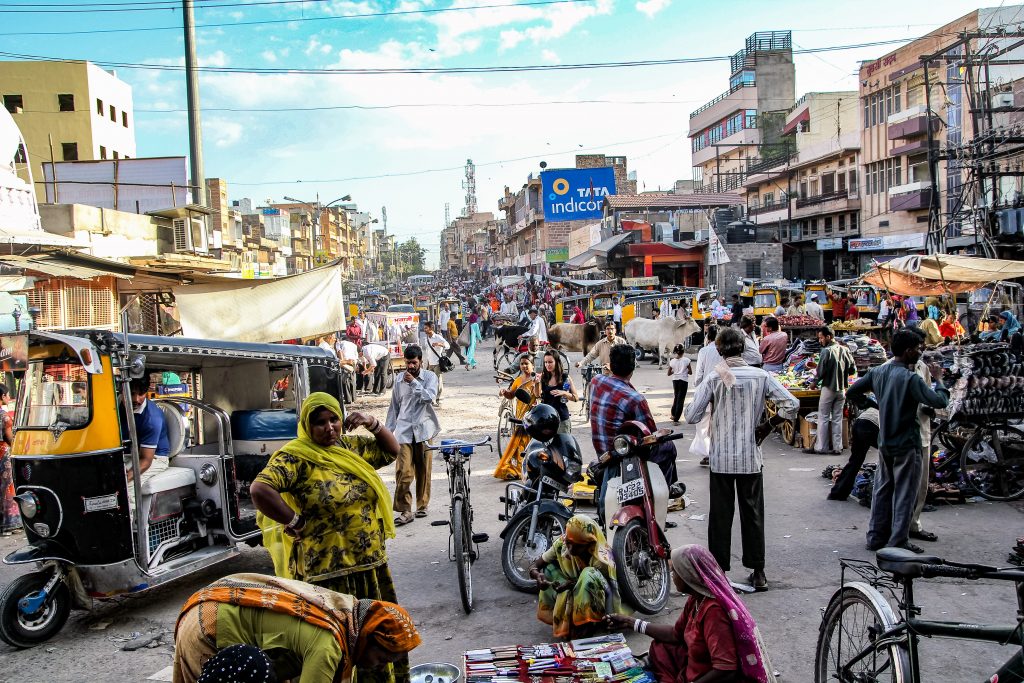
Lastly, there is Varanasi.
And let me tell you one thing. Varanasi takes chaos, eccentric, busy, dirty and surreal to a whole different level!
A normal day in Varanasi includes smells and visual sensations that will knock you of your feet.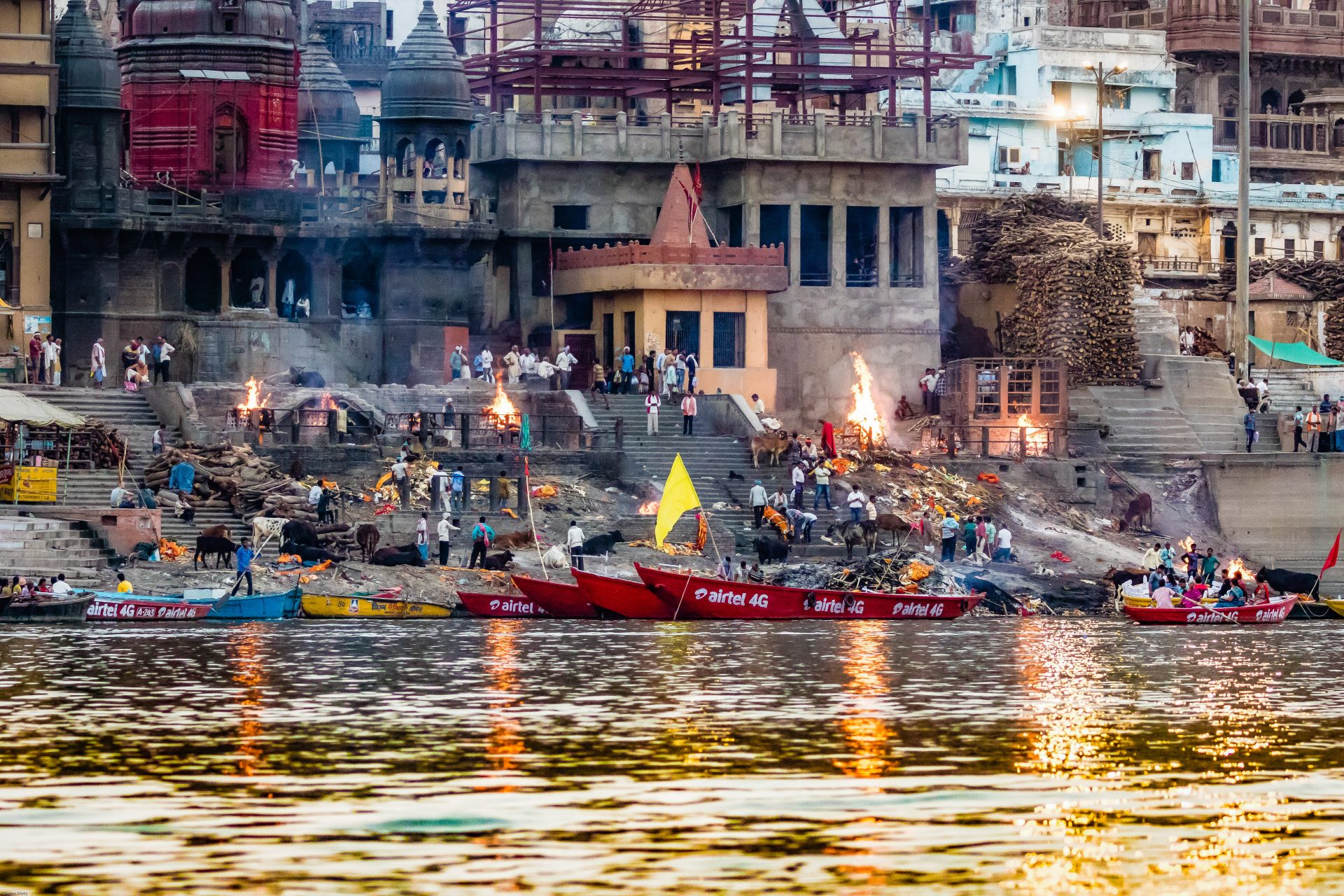
In the narrow alleys you will meet cows, monkeys, goats and elephants. Body-painted holy men walked around in their underwear and dead bodies were carried around in funeral processions. All in one big mix.
This is definitely the most surreal place we have ever visited. And I seriously doubt that there are many other places like it in the world.
The Ganges
Varanasi is one of the oldest cities on earth and it is situated on the banks of the river Ganges.
It is the holiest of the seven holy Indian cities and every devout Hindu wish to visit the city at least once in their life.
Hindu pilgrims come to Varanasi mainly due to two reasons.
The first reaon is because they believe that taking a bath in the Ganges will wash away all sins that one might have committed in life.
The second reason is to attain moksha.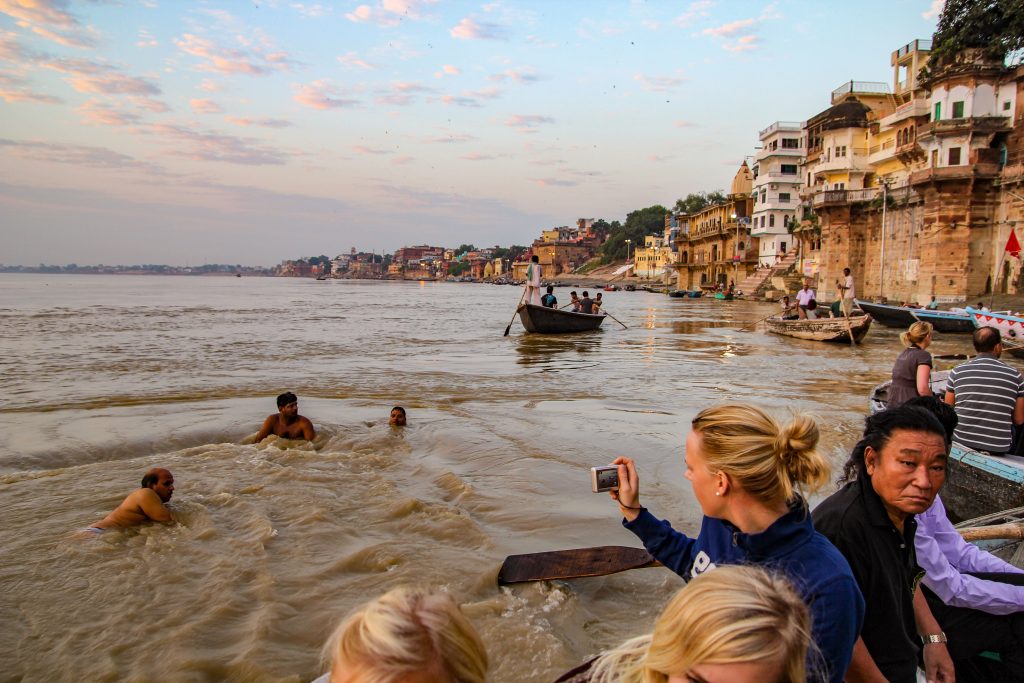
Moksha is when a dead person’s ashes are spread into the Ganges.
Their soul will then be transported to heaven and escape the cycle of reincarnation.
Burning ghats
The dead are dressed in new clothes and their bodies are covered with flowers. They are then carried through the city, to one of the cremation sites down by the river.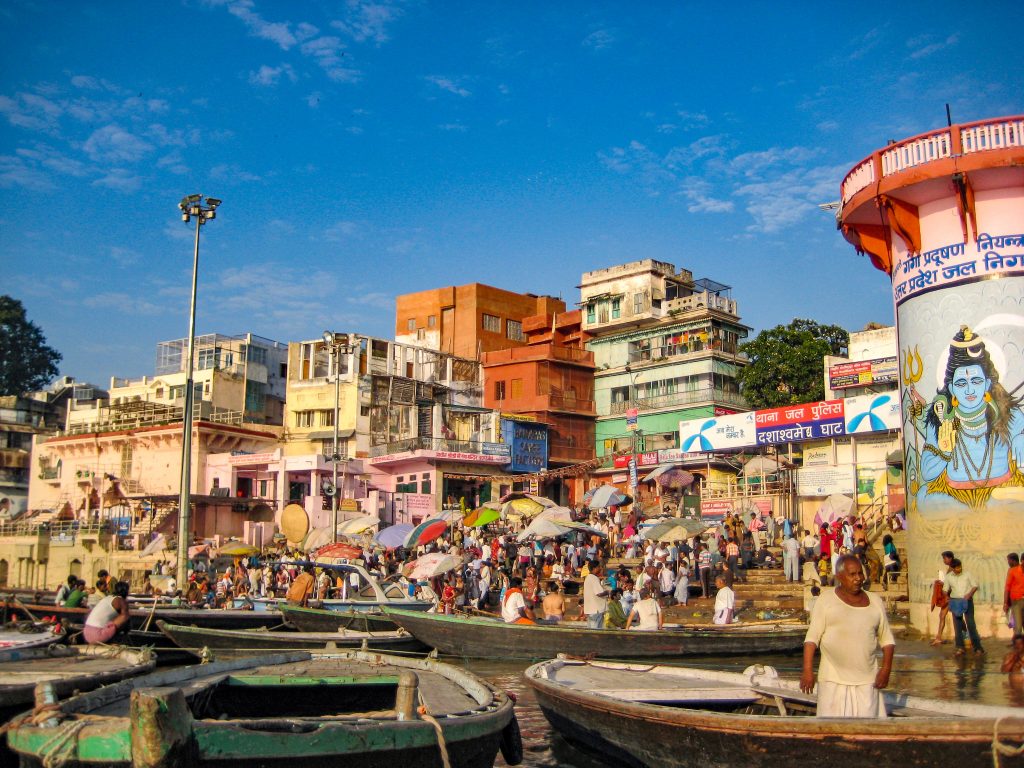
A Ghat is a series of steps leading down to the water and in total there are about 90 Ghats in Varanasi.
One of the most famous ghats is the Manikarnika Ghat.
It is at Manikarnika that most cremations take place. Up to 300 cremations a day. (We choose not to take any photos from the cremations out of respect for the dead.)
Lots of trees
The fires burn 24 hours a day, every day of the year.
A normal cremation takes about three hours, After the cremation is finished, the ashes are scattered into the river.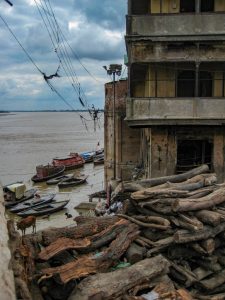
But the cremation process is very expensive and far from everyone can afford it. So many bodies are laid in the river only half-cremated or without being cremated at all.
One cremation requires roughly 360 kg (800 pounds) of firewood. In Varanasi alone there are 33,000 bodies cremated each year.
It is a lot of trees that are being used. Estimates say that around 50 to 60 million trees are annually cut down in the Himalayan rainforest only for this purpose.
Rules of cremation
Not everyone is cremated after death though, there are certain exceptions.
Holy men, babies and pregnant women are already holy enough, so they do not need cremation.
Lepers, people with small pox and people bitten by snakes are not cremated either.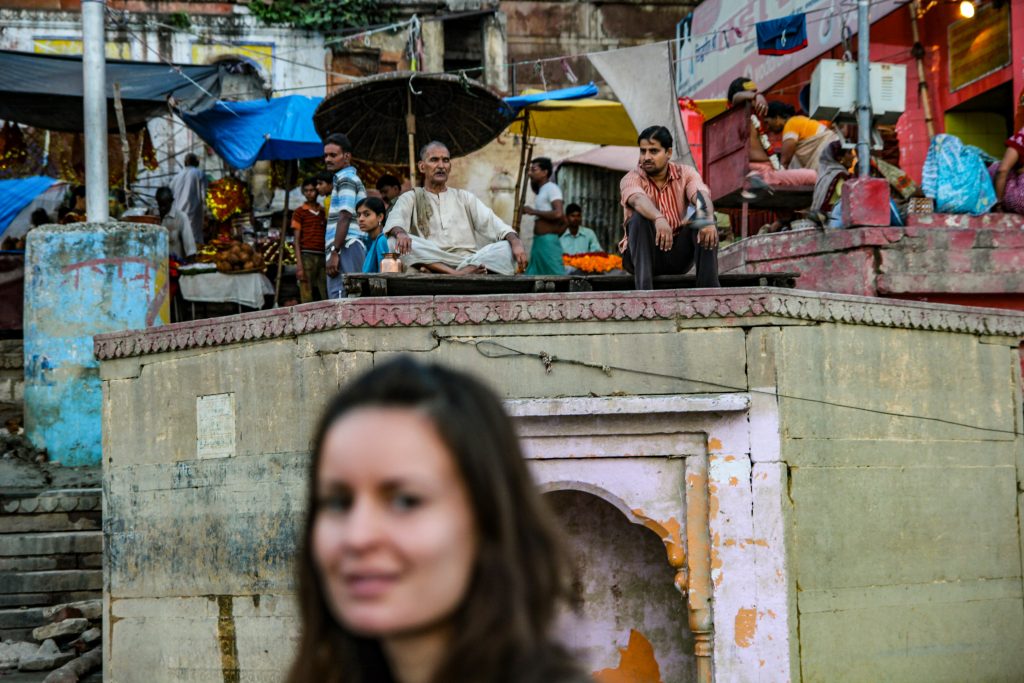
Instead they are put into the river as they were when they died. Some are held down with weights, some not.
So, if you plan on going on a boat ride along the ghats, as we did, be prepared to witness some things that may feel a bit uncomfortable.
It is what it is, and this is Varanasi.
Not your ordinary tourist destination…
Religion – good or bad?
It never stops to amaze me how certain things affects people and how it makes them act and do other certain things.
Religion is one of those things.
Me, I am an agnostic and therefore a confused non-believer who does not know what to believe.
I do respect other people’s beliefs though, as long as they do not force theirs on me.
Even if I was religious, I seriously doubt that any religion in the world would make be take a bath in a river like the Ganges.
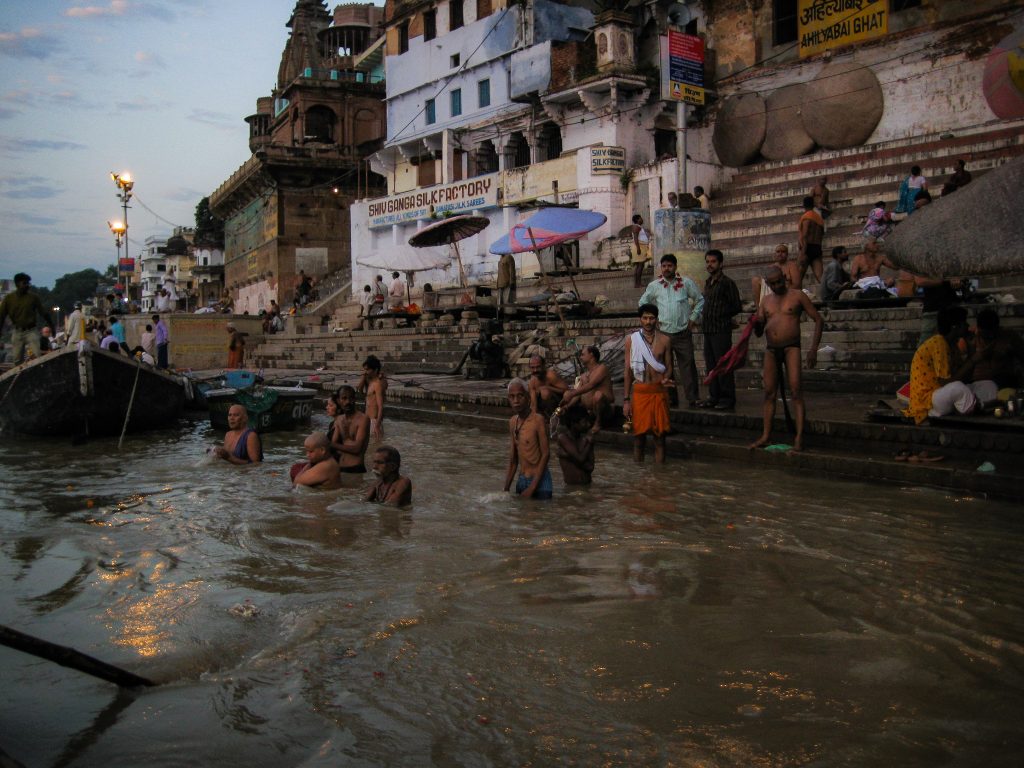 It is one of the most polluted rivers on the planet, Estimates say that more than 3000 million liters of untreated sewage is pumped into the river, each day.
It is one of the most polluted rivers on the planet, Estimates say that more than 3000 million liters of untreated sewage is pumped into the river, each day.
Combine that with all the goodies that are put into its waters at Varanasi and you will have yourself a nice spa cocktail.
Some obviously find pleasure in it.
Me, no. (The same goes for Fariba, I am pretty sure about that…)
Varanasi – good or bad?
Varanasi is an absolutely incredible part of the world. Even so, it is hard to tell if this should be a positive or a negative review.
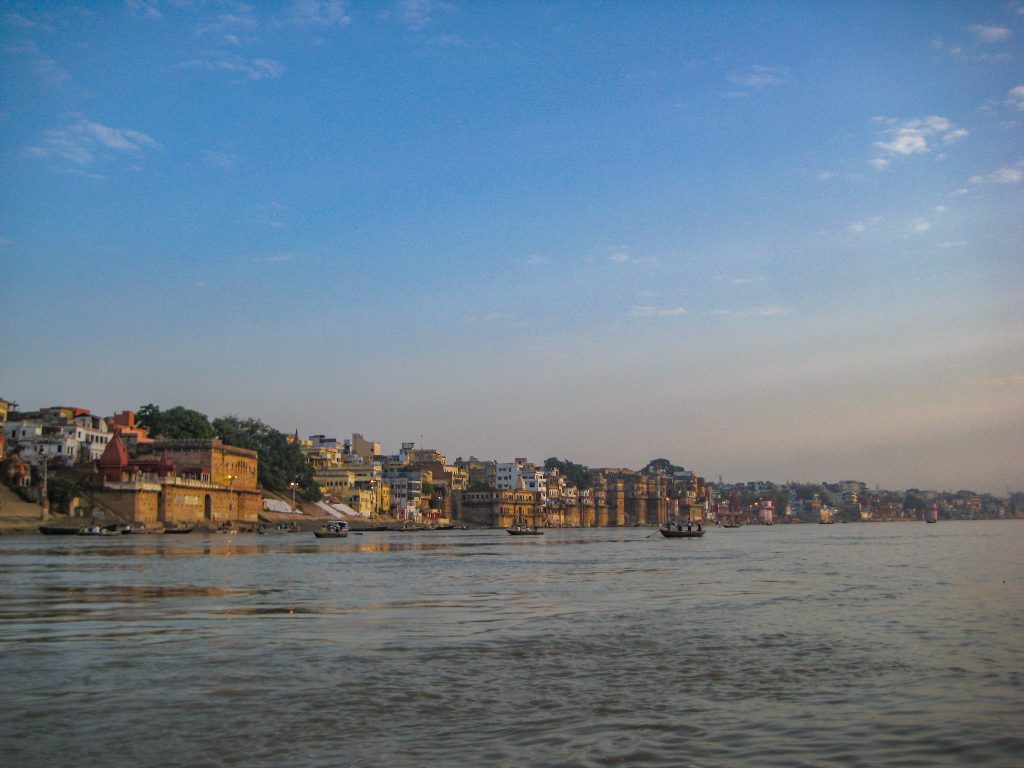 It is just a lot of everything, And a two-day visit should be enough for most people.
It is just a lot of everything, And a two-day visit should be enough for most people.
Sure, there are probably other things that you could do if you want to stay longer. But a day walking around the streets of the city combined with a boat ride on the Ganges was enough for us.
We were by now so full of impressions that it was time to move on.
The end of India
We left Varanasi the following day and our trip to India had come to an end.
To be completely honest. We were happy for all the things that we had experienced and seen, but we were even happier to be on our way to Nepal.
A couple of hours later we looked out the window from the Air India flight destined for Kathmandu.
Beneath us there were mountains, lots of them.
We had finally reached the Himalayas.